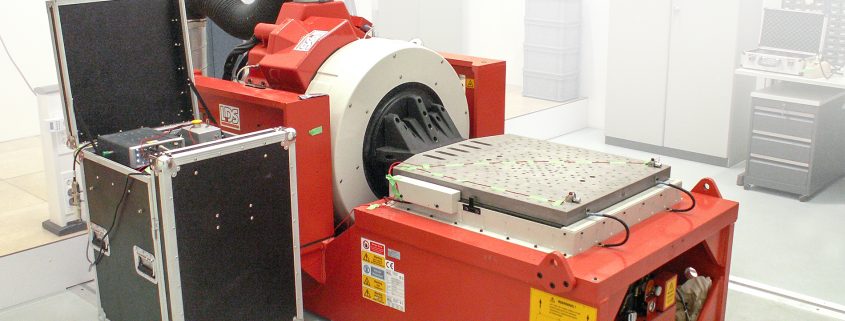NLR’s Vibration and Shock Test (VST) laboratory was recently relocated from its old premises to NLR’s new facility in Marknesse, where a festive ceremony was held to mark the reopening. The VST lab subjects sensitive equipment used in the aerospace industry to shock and vibration tests. In this way, the lab fulfils an essential role in the certification process for precision instruments and electronic equipment on board aircraft and spacecraft. The VST lab has been frequently updated in the past, meets the strictest requirements, and is therefore future-proof.
Vibration and shock testing is part of NLR’s full range of solutions for Electromagnetic Characteristics (EMC) testing and environmental testing (e.g., temperature and altitude tests). Vibration and shock tests often form the final and most demanding phase in the testing process, because these tests are potentially destructive. The equipment is exposed to forces that correspond to the extreme real-life conditions that may prevail during a rocket launch, for instance. A so-called qualification model is often tested initially, followed by a flight model. The flight model is not tested as rigorously as the qualification model; the main focus is on determining if all components have been correctly assembled and calibrated.
The VST lab is attracting a great deal of interest from the Dutch and international aerospace industry. Clients opt for NLR because NLR not only performs tests but also conducts research, applying its extensive expertise in shock and vibration testing. If the design for a piece of equipment did not initially perform as expected during the shock and vibration tests, NLR can make recommendations for possible changes to the design to make sure it passes subsequent testing. In addition, NLR possesses comprehensive expertise in environmental testing and has state-of-the-art facilities for such tests. This enables NLR to serve as a one-stop shop for equipment manufacturers. Finally, manufacturers consider it important that an independent and reputable research organization like NLR performs the tests to get formal approval for the equipment being tested.
Strict criteria apply not only to the equipment subjected to testing, but also to the VST lab itself. In order to satisfy the very stringent requirements of the Dutch Council for Accreditation, for instance, the entire facility had to be recalibrated after the relocation. Thanks in part to this process, NLR’s VST laboratory facility is now an indispensable link in the certification of on-board equipment in aircraft and spacecraft. This enables NLR to make a direct contribution to air traffic safety and safety in the aerospace sector in general, and in particular to the reliability of sensitive on-board equipment.



 © Airbus - Sylvain Ramadier
© Airbus - Sylvain Ramadier